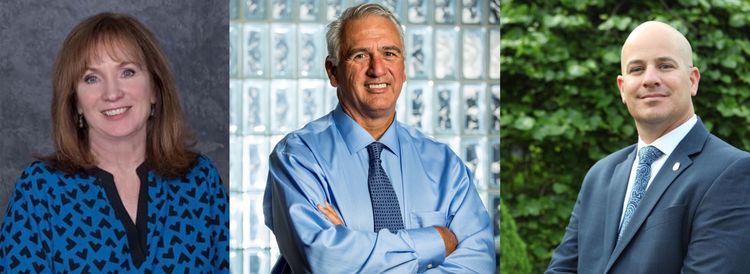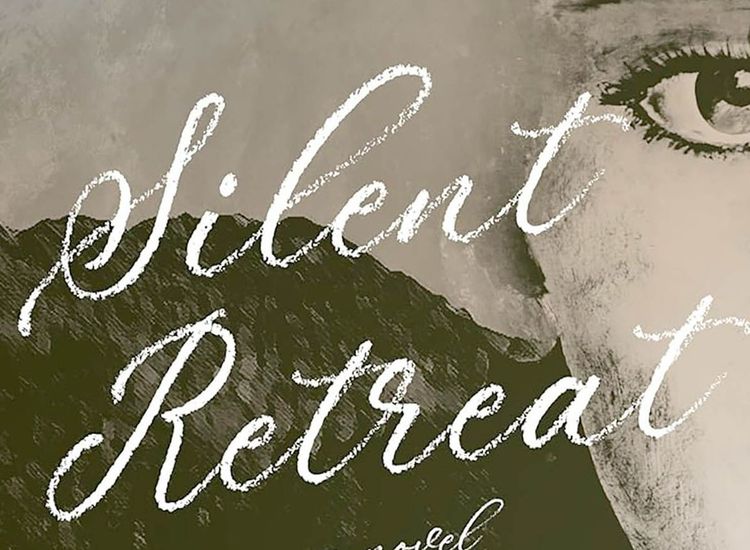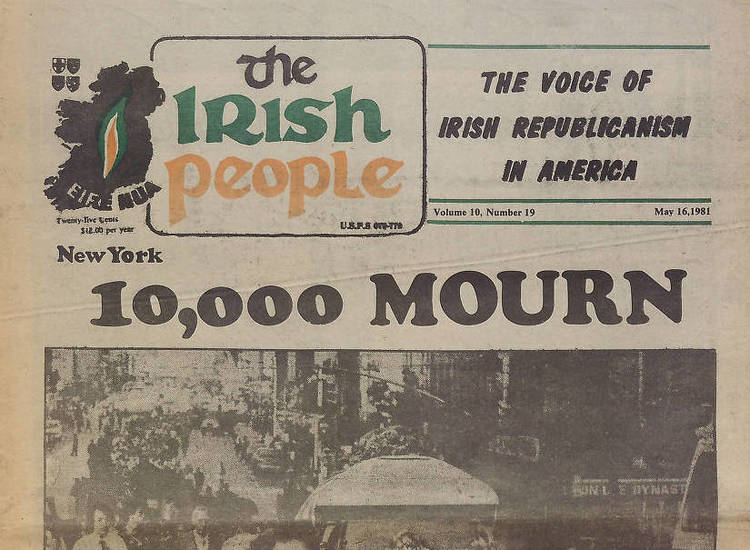President Mary McAleese, center, greeted former Dutch industrialist Dr. Tiede Herrema and his wife Elisabeth at Áras an Uachtaráin on Oct. 3, 2005. He was in Ireland 30 years after his kidnapping to donate his personal papers to the University of Limerick. The couple, who were honorary Irish citizens, returned on a number of occasions, including for a Dublin Castle event in 2012 to commemorate the first anniversary of Queen Elizabeth’s visit to Ireland. Both Herremas died in April 2020, just days apart. He was 99. PHOTO/ROLLING NEWS.IE
By Tom Phelan
On a sunny Sunday morning when I was 5, I walked hand-in-hand with Uncle Jack from my Granny’s house in Derrycloney to the bridge over the Blackwater River in Cloncannon, near Mountmellick.
As we rounded a corner, Uncle Jack said, “There he is.”
Sitting on the parapet of the narrow bridge was Davy Dunne, his flat cap pushed back on his head and the peak pointing to the sky. Davy was the same age as Jack, and every Sunday morning, weather permitting, they met at the bridge to gamble. Sometimes a passerby was invited to join in the game, which involved placing two pennies on the index and middle fingers and pitching them up in the air. If two heads showed when the coins landed, the pitcher won a penny; if two harps showed, the pitcher paid his challenger a penny.
“Hey, Davy,” Jack said. “What do you have? I have fourpence.”
“Sixpence… and look how big you are, Tom. You’re growing like a weed. You’ll soon be as tall as the buchaláns in Joe Mack’s fields.”
As I grew older, whenever I met Davy we got off our bikes to chat. I remember Davy as a kind and good-humored man who knew how to talk to a child and an adolescent. I could not have imagined that one day he would stand in the dock of the high court accused of aiding and abetting a kidnapping.
In 1975 two members of the Provisional IRA, Eddie Gallagher and Marian Coyle, were heartsick for their imprisoned lovers. Gallagher’s partner in crime, Rose Dugdale, serving time for robbery, had given birth to their child in Limerick Prison. Marion Coyle’s man was in jail for IRA-related crimes. Together, Coyle and Gallagher devised a plan that would lead to a grand reunion outside of prison walls: they would kidnap an important person and hold him until their paramours were released.
Dr. Tiede Herrema, a Dutch industrialist, employed 1,200 people in the Ferenka steel plant at Annacotty in County Limerick. Early in the morning of Oct. 3, 1975, as he drove from his home in Castletroy, he was stopped by a member of the Garda Síochána. When Herrema rolled down his window, Eddie Gallagher, dressed as a garda, pointed a gun at him.
Not long after, the Dutch embassy in Dublin was informed by phone that unless the specified republican prisoners were released, Tiede Herrema would be killed in 48 hours.
Soldiers were soon stationed at every seaport and airport in Ireland. The back roads along the Border were put under watch, and the biggest manhunt in Ireland’s history was launched.
The kidnappers allowed the 48-hour deadline to pass, and the country held its communal breath in expectation of bad news about Herrema. The mayor of Limerick City pleaded with the IRA “to find this man and bring him back; otherwise 1,200 people will be out of work.” Meanwhile, the IRA stated it had nothing to do with the kidnapping.
Taoiseach Liam Cosgrove declared the country would make “no deals with terrorists.” The Dutch appealed to him to "do what is necessary to spare Herrema’s life," and they sent a former foreign minister to Ireland to negotiate between the kidnappers and the government.
After two weeks of silence, the kidnappers sent the Dutch embassy a tape recording of Herrema's voice. The Dutchman said he was in good health, and the nation sighed in relief. There was a glimmer of hope that the country might soon enjoy some face-saving among the international community.
In a second tape the kidnappers threatened to cut off Herrema’s foot if their demands were not met. And soon after that, they demanded a £2 million pound ransom and safe passage to the Middle East. It was not clear if they planned to include their lovers on the flight. At the end of the tape, Herrema said, "My abductors will not give the Irish government the satisfaction of getting me back safe unless their demands are met."
When Marion Coyle and Eddie Gallagher captured Herrema on the morning of Oct. 3, they traveled 75 miles northeast to a safe house in Cloncannon. The safe house belonged to Davy Dunne who, decades earlier, had tossed pennies with my Uncle Jack on Sunday mornings at the Blackwater Bridge. I do not know how long Herrema was secreted at Davy’s, but eventually he was moved 12 miles to a house in Monasterevan in County Kildare. Seventeen days after Herrema’s abduction, the Gardaí discovered the hiding place.
On Oct. 21, the Gardaí stormed the house. A gun battle ensued and the kidnappers retreated to the upstairs with Herrema. For the next 18 days the house was under siege as television viewers around the world looked on.

Members of the Irish Defense Forces and An Garda Síochána pictured during the 18-day siege at the house in Monasterevan, Co. Kildare, where Dr. Herrema was being held by his kidnappers. PHOTO: RTÉ
Eventually, Eddie Gallagher got a severe headache, which he mistakenly believed was the onset of meningitis. Afraid he might die without medical attention, he and Marion Coyle surrendered. Shortly thereafter, Davy Dunne was arrested.
At the kidnappers’ trial, Gallagher complained about the poor conditions they had to put up with while hiding in Davy’s house. “The only thing we got in Dunne’s house was flays [fleas]!” he said.
During the trial it revealed that when he was a young man, Davy Dunne had been in a pub in Mountmellick when a row broke out. A local garda, Tom McLoughlin, was called in to calm the situation, but he was knocked to the floor as the fight raged on around him. Davy grasped the garda’s uniform and pulled him outside to safety. Because of this act of good citizenship years before, Davy escaped a jail sentence. Gallagher was sentenced to 20 years in prison and Coyle was given 15.
At the closing of the trial, Davy stood up and addressed the bench: “Your Honor, I would like to say something.” The judge granted his request.
Davy’s delivery did not soar to the great heights of speeches from the dock by Thomas Russell, Robert Emmett or William Orr. Nor was Davy moved to speak about his political philosophy or his love of Ireland. He was a simple countryman whose sense of dignity equaled that of the lowliest and the mightiest in the land, a man who had saved someone from injury.
During the trial Davy had been ridiculed in an extremely public manner. He was outraged that the criminal Gallagher had cast aspersions on his personal cleanliness. Now Davy Dunne stood tall and glared at Gallagher. Then, in a defiant voice he said, “Your Honor, there are no flays in my house!”
Copyright © 2021 by Glanvil Enterprises, Ltd. Tom Phelan is the author most recently of the memoir “We Were Rich and We Didn’t Know It.” For more details go tomphelan.net.









